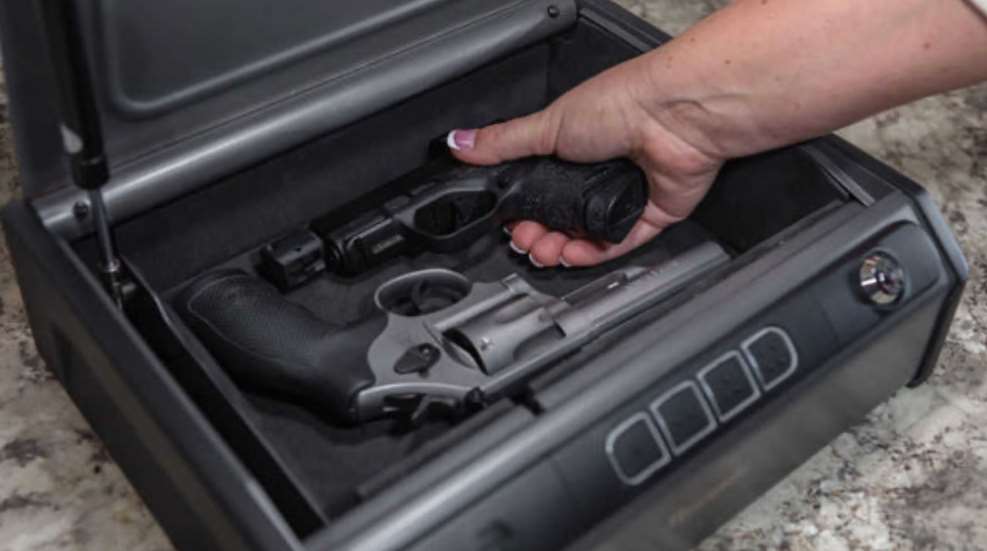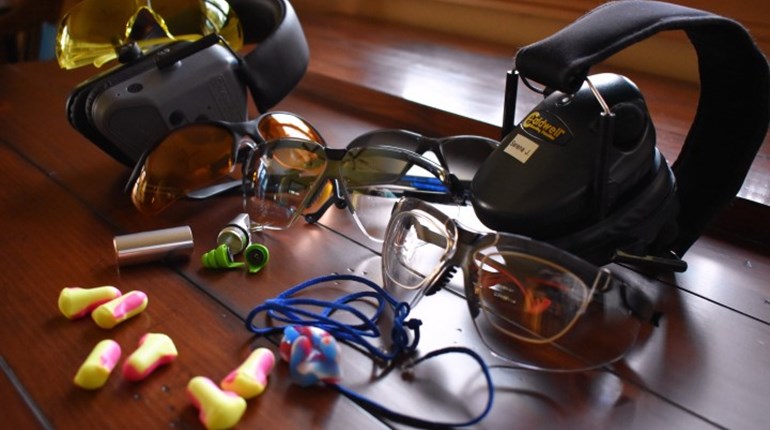
When you decide to keep a firearm in the home for protection, and there are children present, extra precautions must be taken. Many states have laws for proper storage of guns when minors are in the home, so be sure to check regulations that pertain to you. Of course, no matter the age of family members, the NRA Gun Safety Rules always apply:
- ALWAYS Keep the Gun Pointed in a Safe Direction
- ALWAYS Keep Your Finger off the Trigger Until Ready to Shoot
- ALWAYS Keep the Gun Unloaded Until Ready to Use
While gun safety rules go a long way toward preventing accidents and should never be violated, three more fundamentals will help every parent ensure gun safety in the home: Educating yourself on your firearms; educating your children on firearms; and above all, securing firearms when you are not in direct control of them.
Get Educated
Always read the owner’s manual to understand the manufacturer’s recommendations for the safe and proper use of each firearm. The manual should explain how to safely load and unload the firearm, as well as how to field strip the firearm for cleaning and re-assemble the gun. Additionally, always register your firearm with the manufacturer so that in the event of a safety recall on any components, the manufacturer can provide critical information about the recall. Lastly, if you still have questions about your firearm, call the manufacturer. Every manufacturer has a toll-free customer service number. If the customer service agent is unable to help you, they will quickly get you to the right person in the company, such as technical support or from the sales team.
You must also become educated in the safe and proper use of your firearms. This means that you must have the “knowledge, skills, and attitude” (KSAs) to safely operate, store, and in some cases, carry your firearm of choice. The best place to obtain knowledge, skills, and attitude is from NRA Certified Instructors, who can be found all around the country.
Another component of education is frequent live-fire practice at the range. The more you use your firearm, the more proficient and safer you will become. Going to the range also has more advantages than just shooting. The environment is filled with likeminded people, most of them are willing to help each other. In Texas, where I live, range practice is a social event where many friendships and relationships begin. I have made many friends by way of the range and gathered great shooting tips from other shooters.
Educate Children
Many parents believe they should shield their children from the knowledge that there is a firearm in the home. But actually, offering a caution about firearms is no different than telling them to avoid anything else in the house that could seriously injure them or cause death. For example, breaker boxes (fuse panels), natural gas lines and valves, or drawers with knives or any other sharp object can all pose danger. Parents routinely teach their children to avoid these potentially dangerous locations and items. A firearm should be no different.

Parents need to show their children any firearms in the house so they know what the gun in their living space looks like. After all, if they need to know what the rules are and if the rules are “Do Not Touch” they need to know what it is they are not to touch! Children are naturally curious. If you tell someone to NOT touch that red button … what is the only thing going through their mind? More than likely, it is to touch that red button! In other words, remove the curiosity associated with firearms.
Beyond taking an NRA Basic Rifle, Pistol or Shotgun course to become a responsible gun owner, parents should go one step further and consider bringing their child or children with them to the NRA course. This will reinforce that responsible gun ownership and shooting is a family activity. They also become aware and learn that any time a firearm is in their presence or in their proximity, a parent or other trained adult should always be present.

There is no minimum age for a child to attend a firearms safety class, within reason. As long as the child has demonstrated enough maturity to understand safety, can stay focused for an 8- to 10-hour course, and not be a distraction to others, they are welcome. If your child is under 13, it is advisable to ask the instructor for permission for a young child to attend. You want an instructor who can “talk” to young students, a skill some instructors do better than others.
Since 1871, the NRA’s firearm training programs have been the gold standard for the safe and proper use of firearms. While NRA Certified Instructors must be at least 21 years old, younger enthusiasts are eligible to become Apprentice Instructors (ages 13-17) and Assistant Instructors (ages 18-20), working under the guidance of a 21+ year old Instructor. Apprentice and Assistant Instructors are required to undergo the same strict training and qualification as Certified Instructors, except the two lower ratings can score 85 percent to pass the written exam, while Certified candidates must have at least 90 percent. If the young man or woman has been helping teach a discipline, they can become a Certified NRA Instructor at 21 years of age with a letter form an active instructor who has been acting as their mentor.

\
Secure, Secure, Secure
The most important thing to remember is the act of “hiding” something is not “securing” something. Failing to properly secure a firearm is a prime reason for accidents. Bringing a firearm into the home is not like bringing in your weekly groceries. You cannot be careless or carefree in its handling, simply setting the gun on the counter or table waiting for you to “get around to it” to put away. If you are not in direct control of a firearm, it must be unloaded and secured so no unauthorized individual can gain access to it. There is no good reason a firearm should not be secured when it is not in your direct control, especially if children are in the house.
Every new firearm that is sold must be accompanied by a gun lock. The most common type is a cable lock, which has a cable that runs through the barrel, breach and magazine well, or the cylinder of a revolver. Other locks include trigger locks that cover the trigger and trigger guard, and chamber locks used in break-action firearms.
Another option is a small gun box or safe. These are usually situated used next to the bed or another strategic location that is large enough for one or two handguns. Some of these boxes are operated by a combination, key or biometrics. These are designed to be readily accessible when needed but also keep unauthorized persons from gaining access to the firearm.

The best type of security for your firearms is a gun safe. Safes are heavy and can be bolted to the floor or wall studs. Many safes have a fire rating, (how long it can protect the contents in case of a fire). Safes are also operated by a combination, key or biometrics to open and grant access to the contents within.
Nobody expects an accident or especially a tragedy to happen. Parents can take steps to minimize the risk of the “unthinkable” from happening. It starts with following the NRA Gun Safety Rules, educating both the parent and the child, and securing unattended firearms.
Firearm safety starts at home. If parents do their part and begin teaching their young ones the importance of firearm safety and being a responsible gun owner, then their children will have that safety knowledge engrained in them and will carry it with them when they leave the home. This is important because even though you may do everything right at your home, your children may end up at a friend’s house where gun safety is not observed. By doing your part, your children will be prepared to be safe in and out of your home!















































